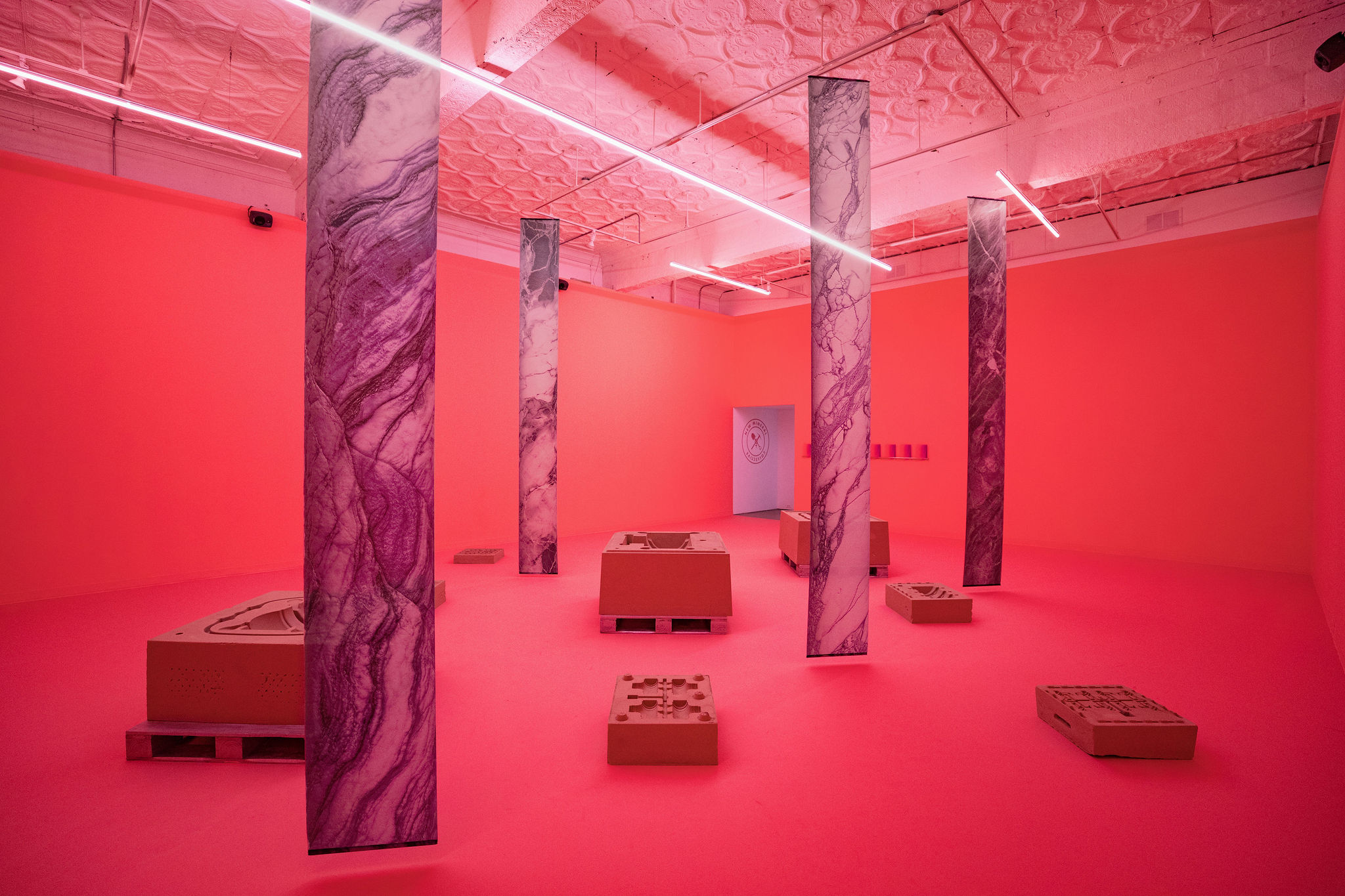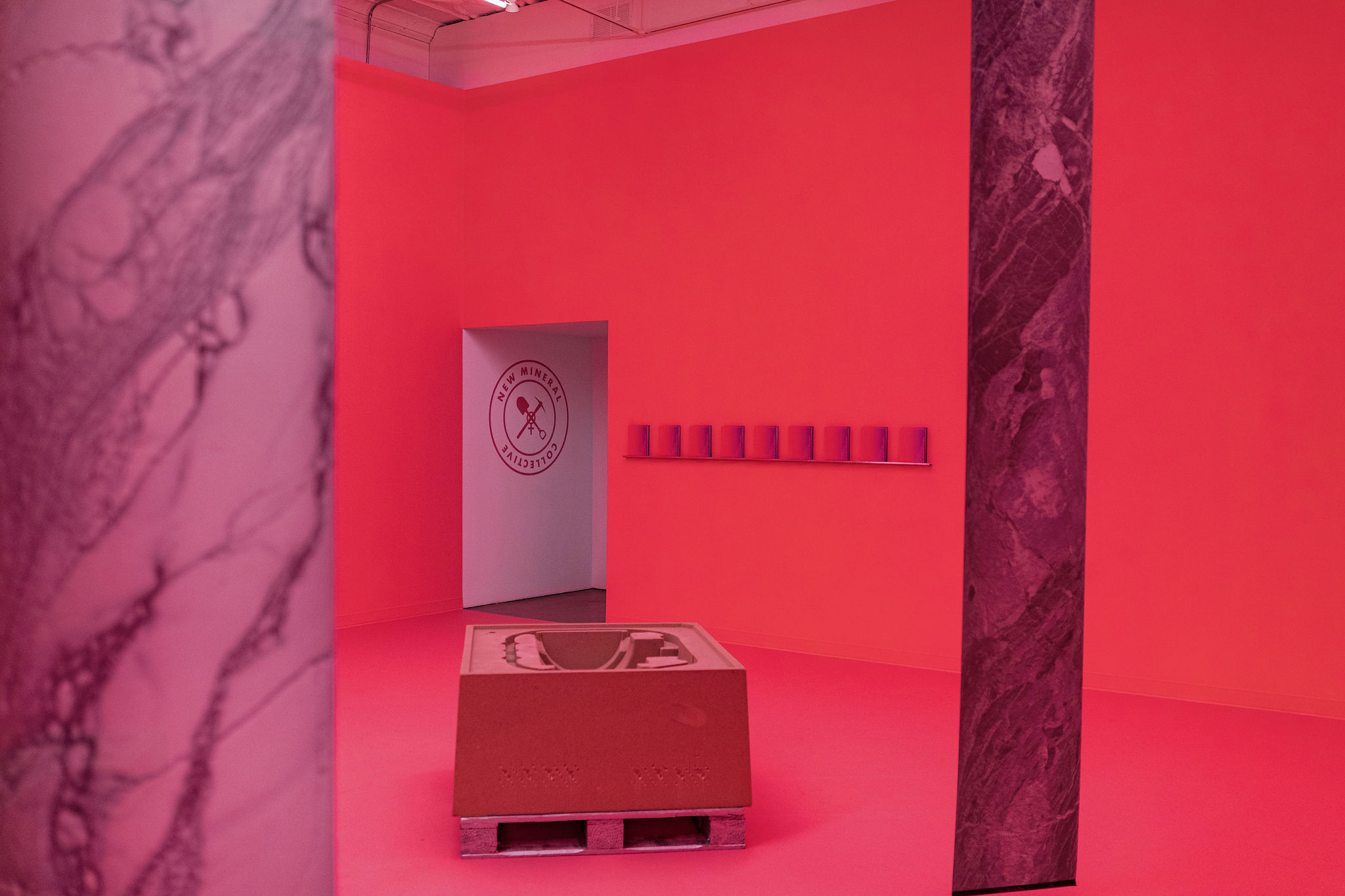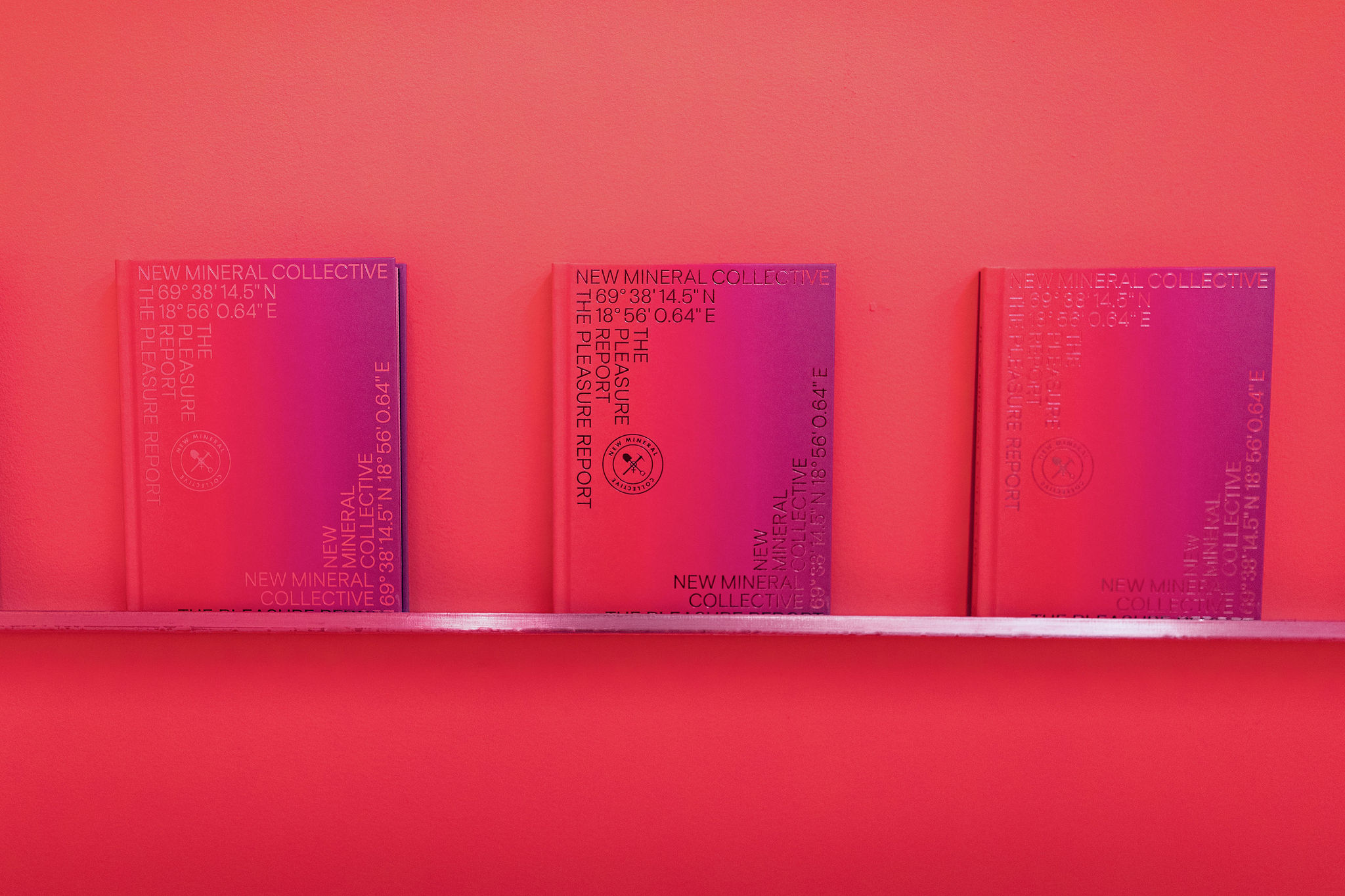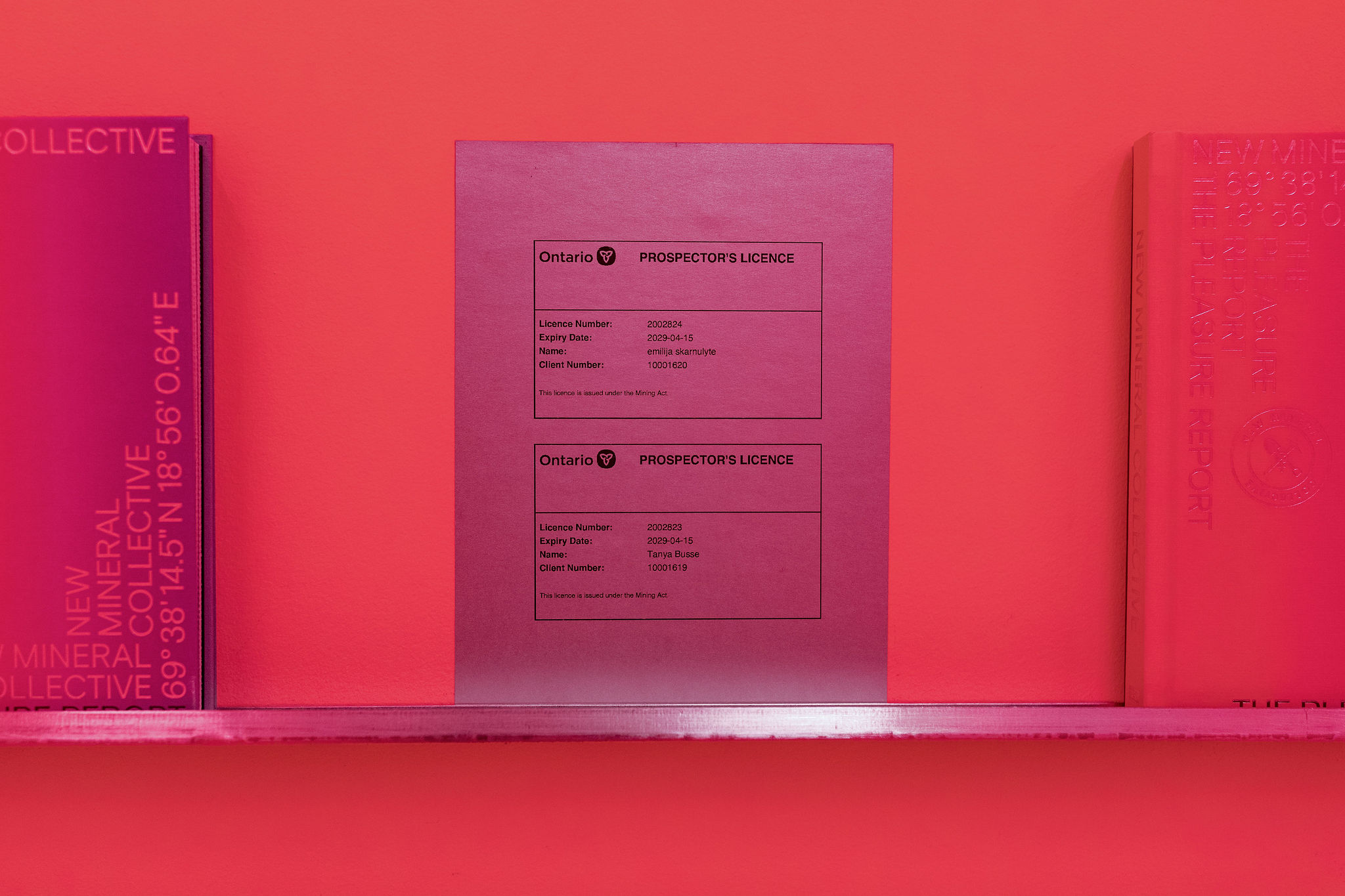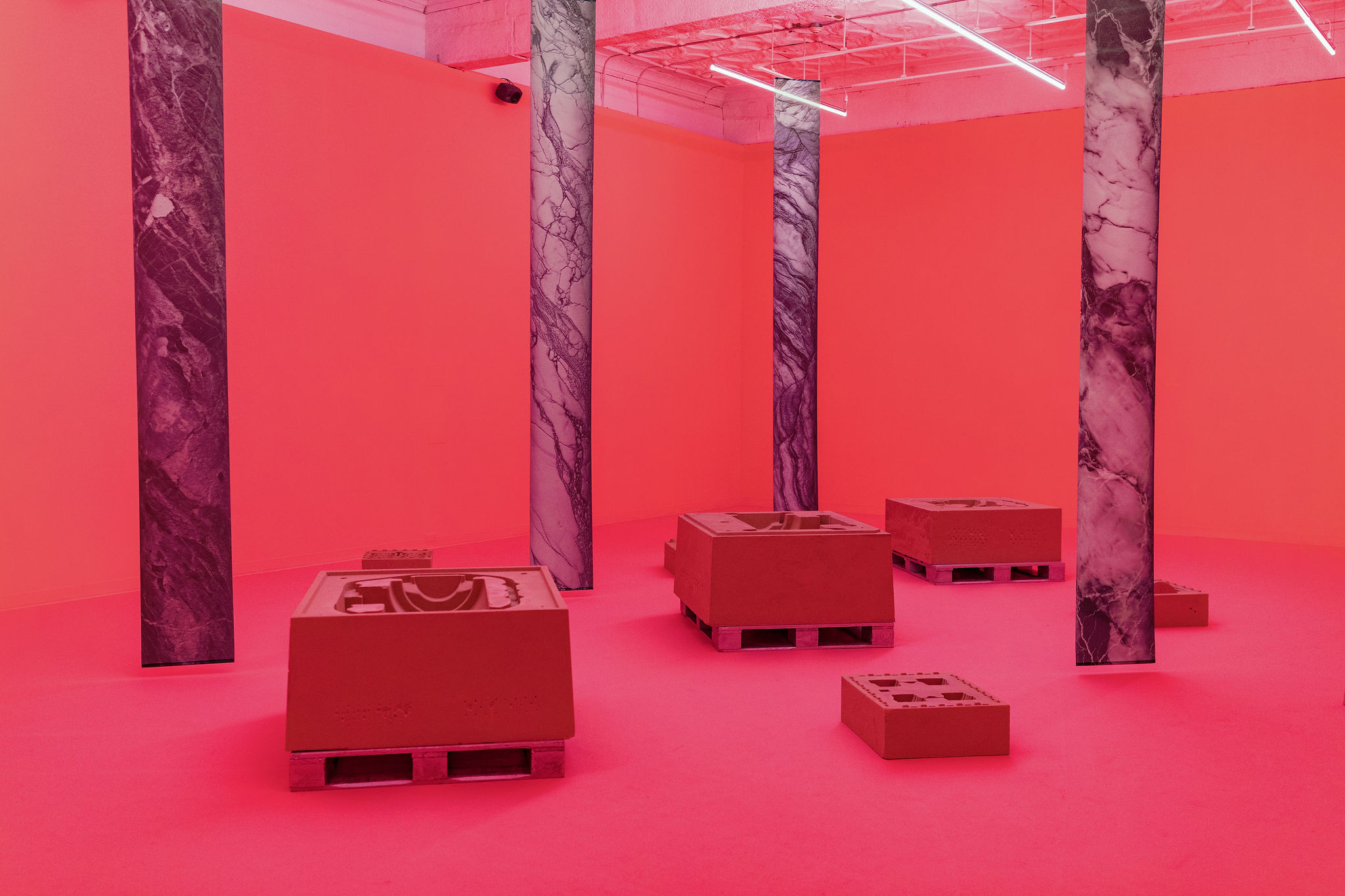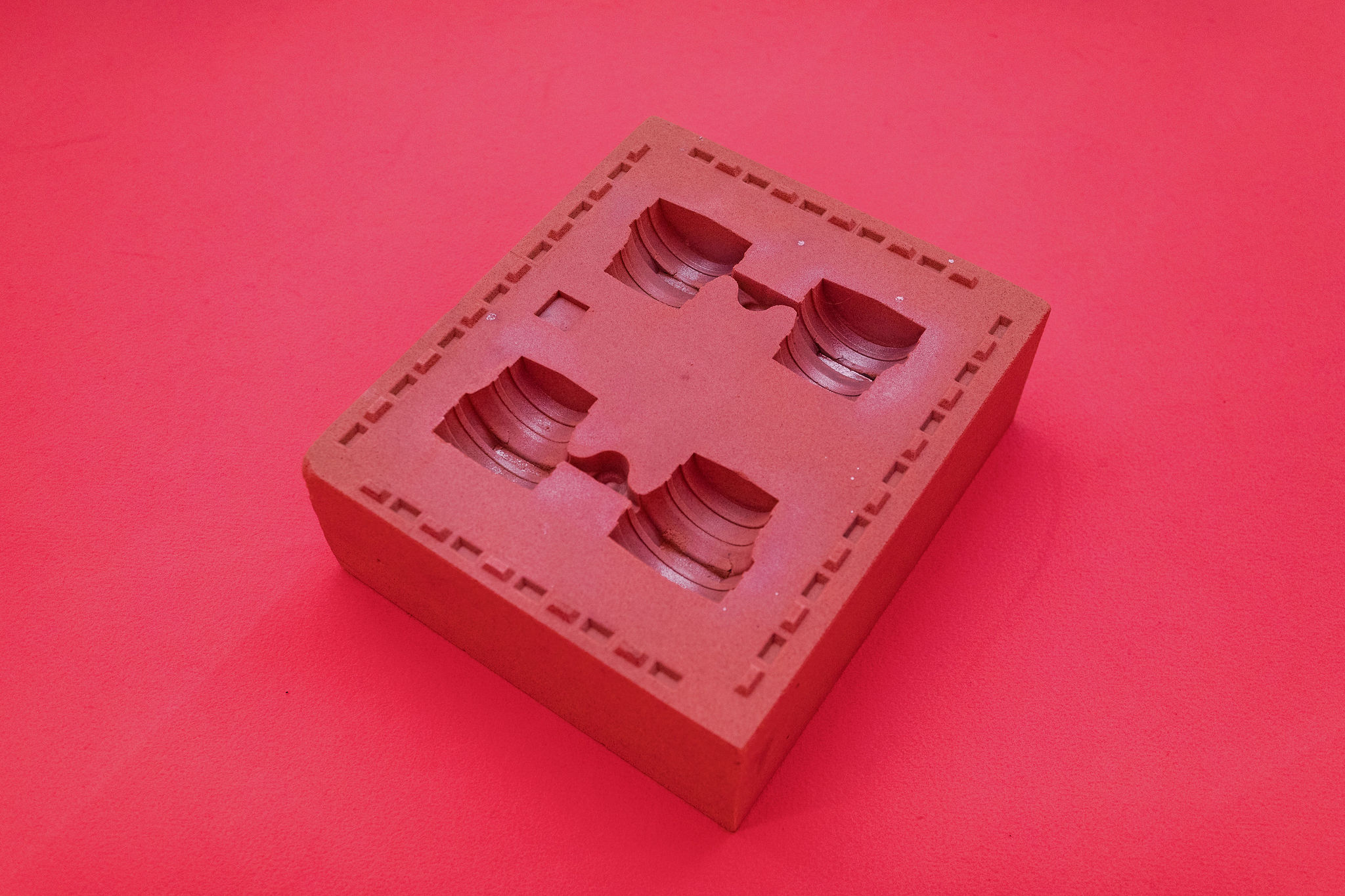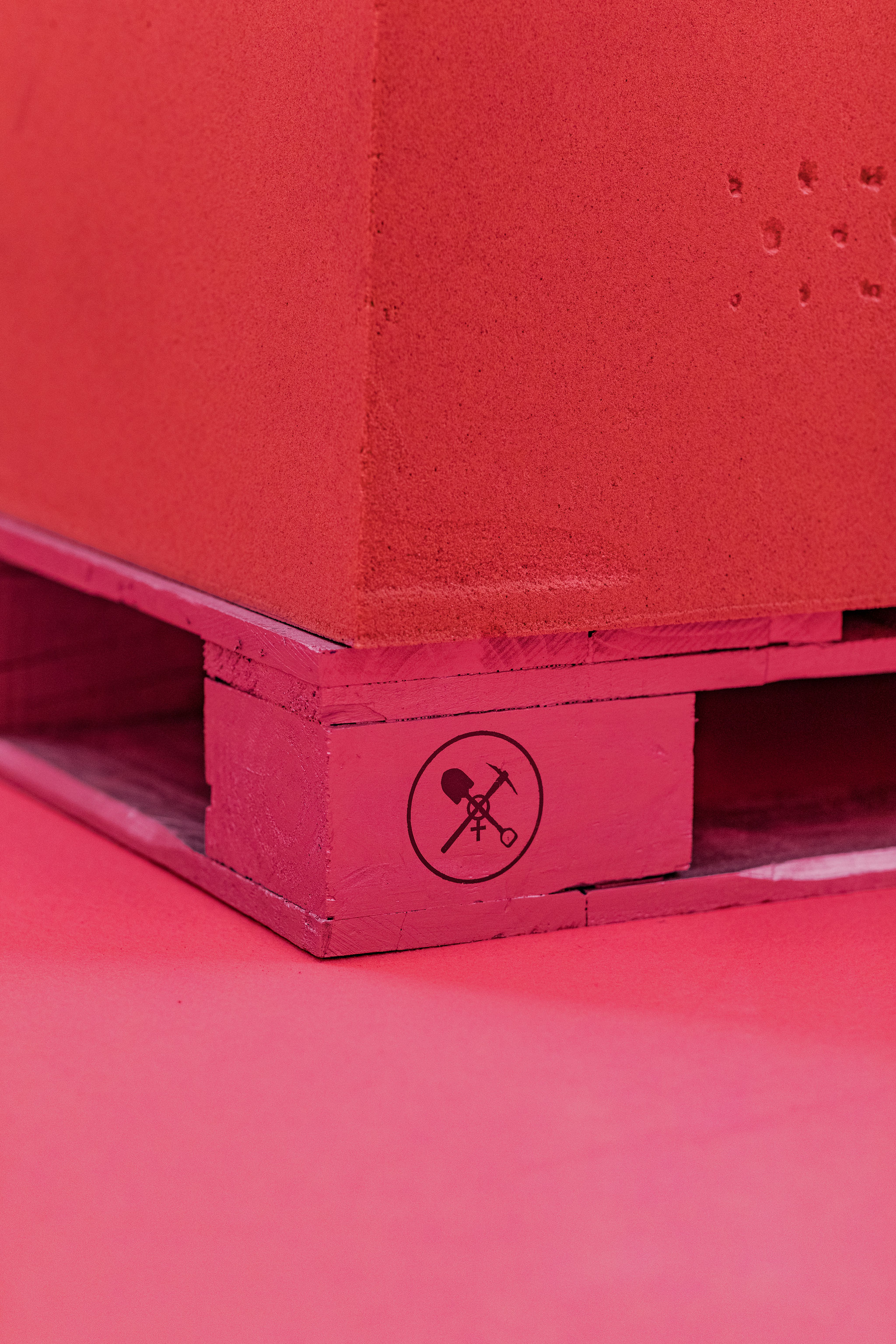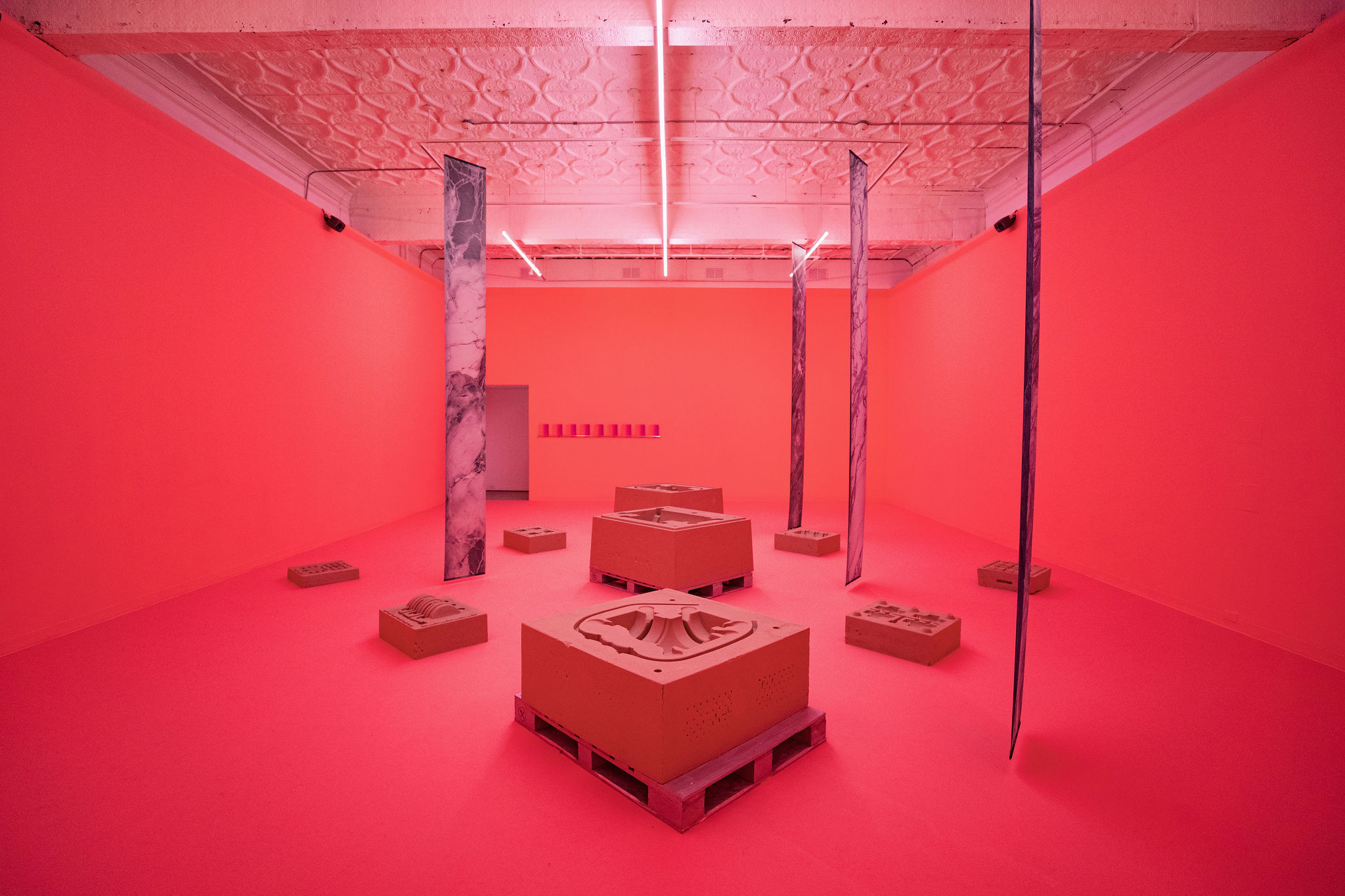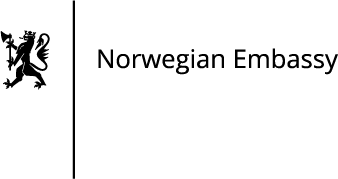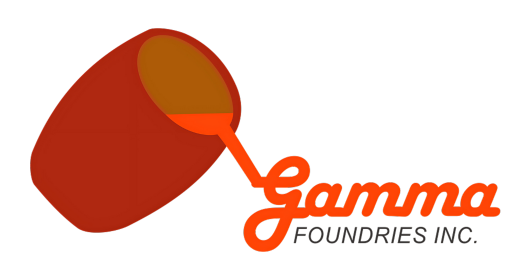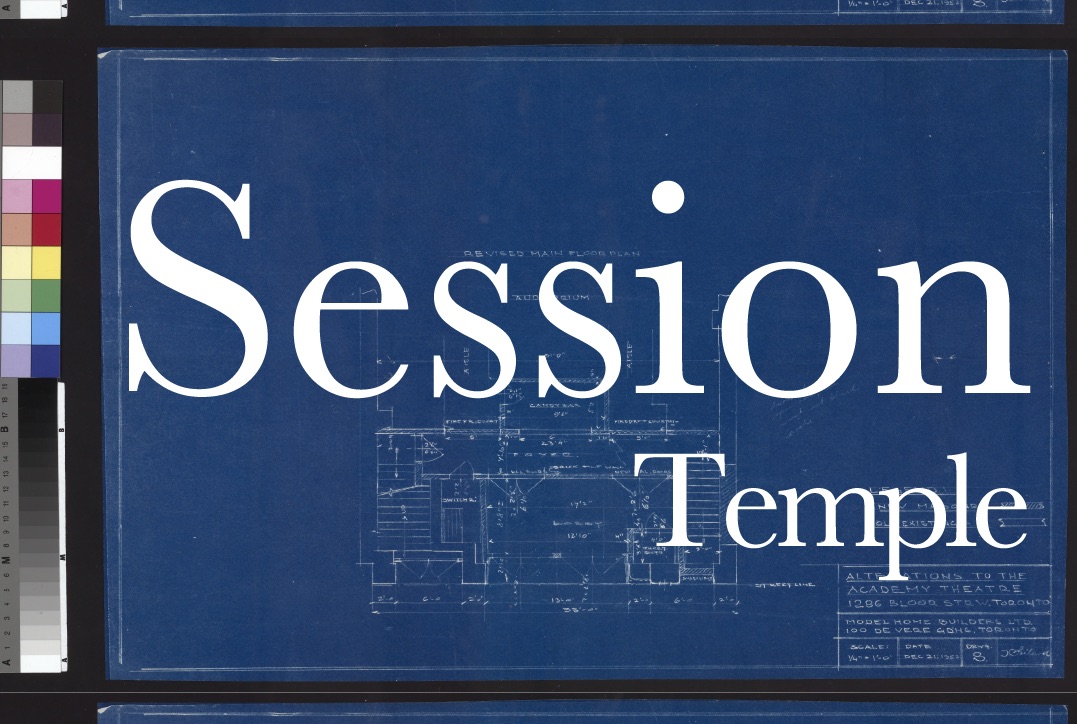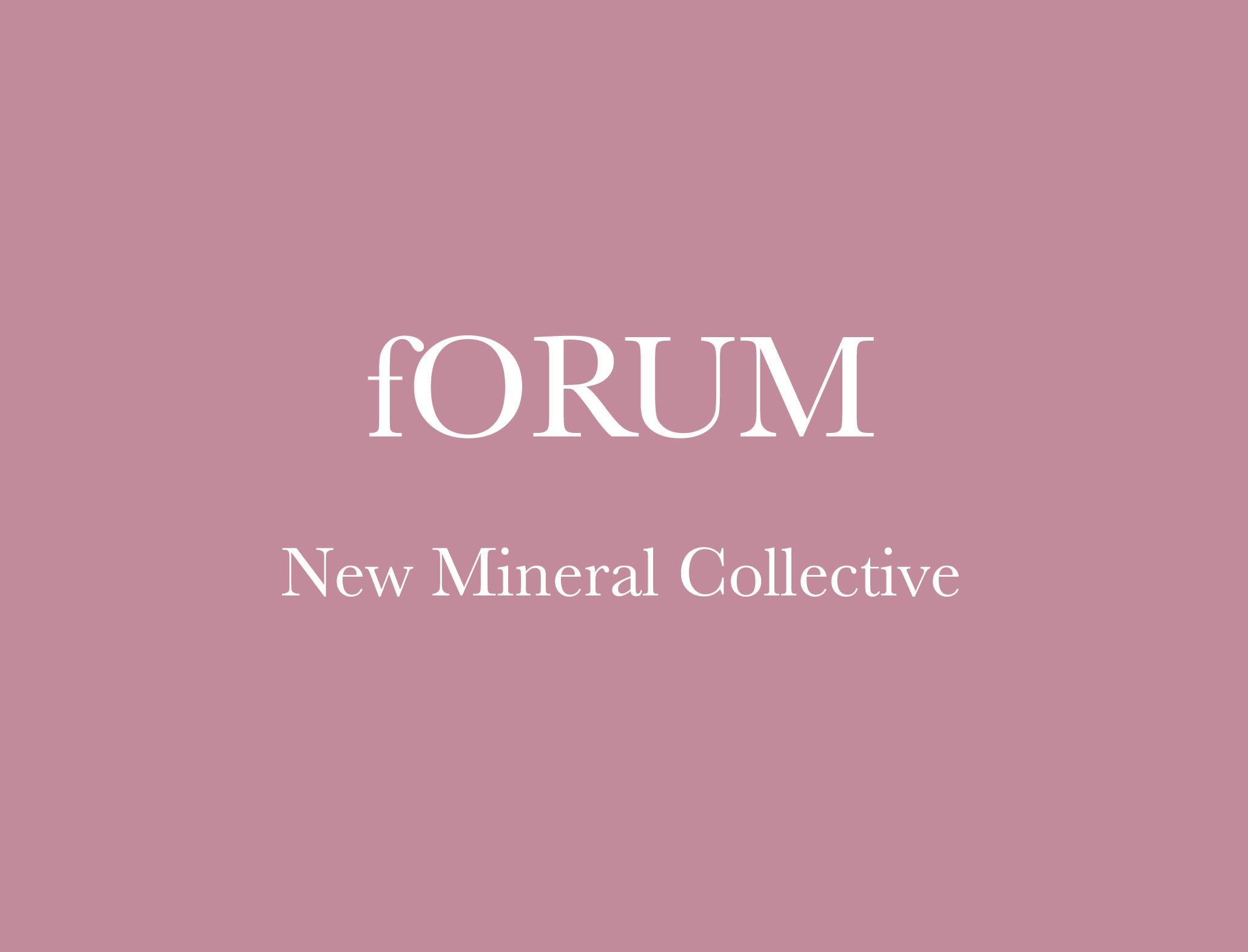Artist First is Mercer Union’s commissioning platform and the first of its kind amongst artist-run centres in Canada.
New Mineral Collective is the collaborative practice of Canadian artist Tanya Busse and Lithuanian artist Emilija Škarnulytė. Working across sculpture, photography, and time-based media, the artists look at contemporary landscape politics, particularly at the practices of extractive economies that convert natural resources into global commodities, to critically examine and reconceptualize the nature of human interaction with the Earth. The artists envision their creative output as a series of tactics that have the capacity to infiltrate and unsettle the logic of extraction. Designating themselves as “the largest and least productive mining company in the world,” they define their operations as “counter prospecting” in opposition to the practice of excavating and exploiting raw materials from land. Their work is concerned with land valuation and speculation, not through the unearthing of materials for financial profit, but rather by imagining reparative alternatives to the capitalist and damaging activities that warp the Earth’s surface.
For their exhibition at Mercer Union, The Pleasure Report, New Mineral Collective presents a new sculptural and sound installation that deepens their previous investigative work in Ontario, one of the richest resource areas in the world. Their previous research saw them operate as a counter prospecting corporation that acquired mineral prospecting licenses in order to subversively stake claims on parcels of land and prevent them from future extraction. This undercover work referenced non-violent disruptive tactics in climate activism and furthered the artists’ engagement with prospecting processes in the province. In The Pleasure Report, New Mineral Collective expands upon this artistic appropriation of mining industry practices through works that contemplate the concept of a “corporate toolbox.” What tools can be found in the counter prospector’s toolkit? How can these instruments be deployed upon the land in keeping with counter prospecting values?
These central concerns take shape in the gallery through an arrangement of minimalist sculptures in the form of sand cast molds, referencing the object-making method that uses depressed cavities in packed sand to create negative molds that are filled with molten metal. The artists’ tools are in fact speculative ones, not yet cast into material existence. Displayed in this state, the sculptures call attention to the recessed and protruded patterns on the molds that hint to their final shape and engage with process as a necessary approach when new technologies and systems are being invented. The artists implicate the viewer within the act of speculation to imagine the potential of such tools, asking how the human and industrial contact made upon the Earth’s surface can restore rather than derive value from it. Interspersed throughout the sculptures are a series of digitally rendered images of core samples printed on textiles stretching the height of the gallery, which take after the columns of rock and sediment that are withdrawn by special drills. The installation resurfaces the subterranean and attunes the viewer to the naturally occurring geological forces of the cycles of sedimentation, making the demand that technologies engaging with the Earth be formed through an understanding of its material realities. Meanwhile, a calm and soothing voice from a sound work (made by the collective in collaboration with artist Tuomas A. Laitinen) guides viewers through a progression of breathing exercises, using sampled field recordings from mining sites and the slow fluctuations of pink noise to calibrate the rhythm of the body with the act probing into the planet.
One of their responsibilities as “prospectors” in Ontario requires New Mineral Collective to report upon the work performed on their plots of land. For the artists, this has taken the form of a monograph that shares the exhibition’s name. While the voice from the sound work speaks of the “Pleasure Report” as a document highlighting the status of the collective’s operations and their key findings, it also serves as an accompaniment to the array of tools proposed in the exhibition. Notably, the publication features a glossary of terms that articulate the artists’ worldview and underscores the importance of constructing a new language to define new methods.
New Mineral Collective: The Pleasure Report is the ninth project developed through Mercer Union’s Artist First commissioning platform, and New Mineral Collective’s first institutional solo exhibition in North America.
The Pleasure Report coincides with the launch of New Mineral Collective’s first monograph, of the same name, published by Information Office. The artists will present a talk alongside the publication launch on 25 January 2025 at Art Metropole.
